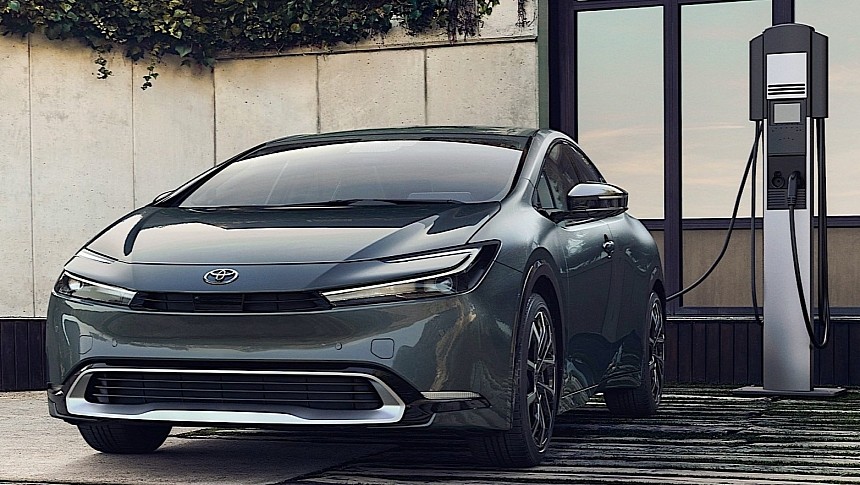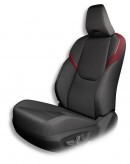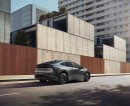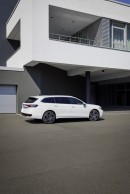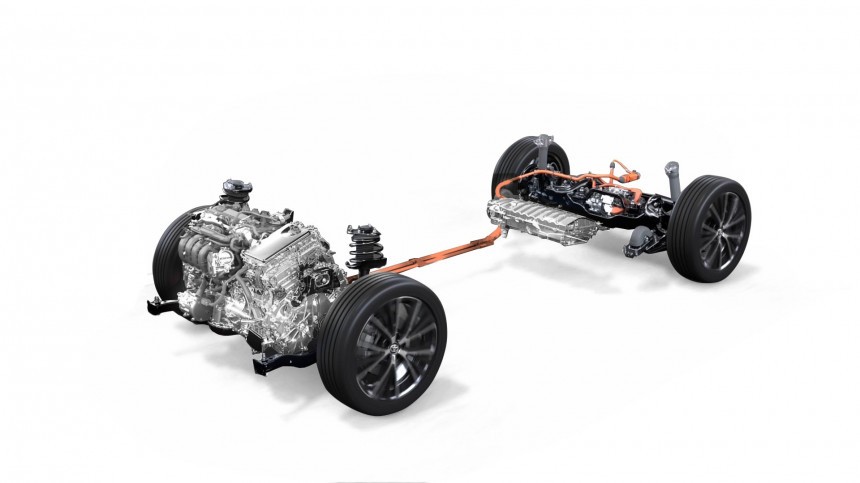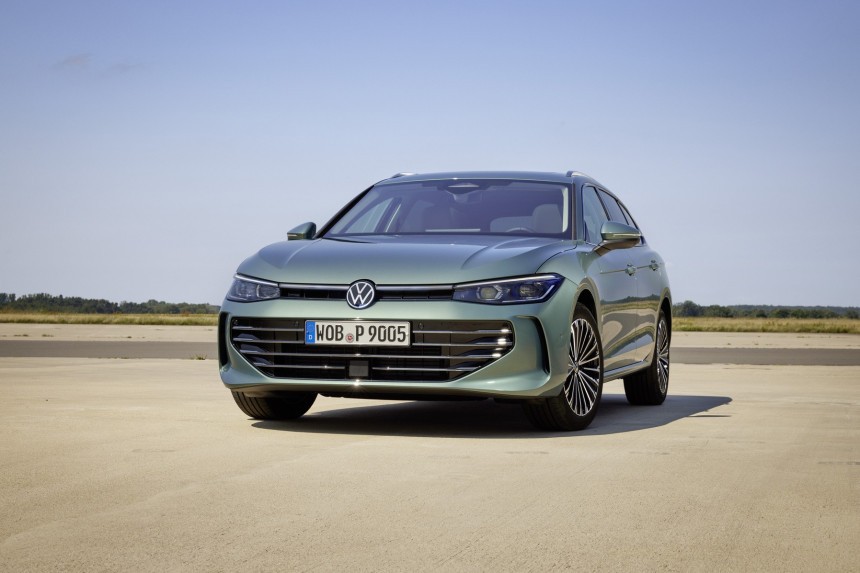I've shared here my experience when I sold my 2017 BMW 225xe and bought a 2002 Opel Zafira. Although my PHEV had a ridiculous electric range, I confess I miss plugging it and having it ready to drive. Kevin Williams' review of the new Toyota Prius Prime for Jalopnik reminded me of that convenience and how flawed the discussion around reducing climate change with battery electric vehicles (BEVs) is.
Jalopnik itself reinforced that with a study that revealed only those who drive a lot manage to reduce their carbon footprint. My colleague Florin Amariei wrote more extensively about the same research. Summing it up, the idea is that building a BEV emits more carbon than making a car powered by an internal combustion engine (ICE). That said, you will only offset the additional emissions it produces in manufacturing if you drive it for more than 69,000 miles (111,045 kilometers). These numbers frequently change and depend on where the BEV is made and where it charges: cleaner electricity sources will help these vehicles offset the emissions in their construction more quickly.
Regardless of the number, the main culprit for carbon emissions in a BEV is the battery pack. The larger it is, the more carbon emissions are involved. The problem is that small ones do not offer very long ranges. Apart from having an ICE, this is the main reason for PHEVs to be attacked by BEV advocates: they think plug-in hybrids are an unnecessary step toward full electrification. Gill Pratt already tried to explain why they were wrong, but it did not convince them.
Toyota's chief scientist demonstrated how a 10-kWh battery pack has a higher impact if it is divided into 90 battery packs with 1.1 kWh for hybrids. In a fleet of 100 vehicles, the 100 kWh would serve a single BEV. If the goal is to lower carbon emissions, the 90 hybrids would have a more significant impact than only one electric car. PHEVs wouldn't help much in that example as well: the 100 kWh would allow the production of only six units with 18-kWh battery packs. If you do the math, you'll get 108 kWh, which makes no sense. If you only have 100 kWh, you could have six PHEVs with 16.6 kWh.
The question is that you cannot cover any meaningful distance with a hybrid in EV mode: you may just reach the street without making much noise, but that's it. You will always need fuel, just like you do with the e-POWER system Nissan invented. Although only the electric motor powers the wheels, there is no way to recharge the small battery pack that equips these cars. A PHEV really helps you avoid visiting the fuel station.
In my case, the 225xe would travel only 25 km (15.5 mi) with the juice from its batteries. It was great to take and pick up my kids from school, but that was basically all I could do without using gas. Even if I followed Williams' recommendation of "always be charging" (ABC), it would not work. And I can tell you I tried that for almost three years. Going to a shopping mall was a challenge. In some of them, there were no chargers. In others, the ones available were already taken. I could only count for sure on my own power outlets to charge the vehicle. This is why ABC only makes sense with a battery pack that provides a higher capacity, such as the one in the Prius Prime: I would have been happier with my 225xe if it offered 39 miles (62.8 km) of range.
The new Volkswagen Passat promises 62 miles (100 kilometers) of WLTP range. It will be interesting to see how far the station wagon will manage to travel in real-world conditions. Although its station-wagon format would be perfect for my needs, the €60,000 ($64,767 at the current exchange rate) Volkswagen will ask for its PHEV is way out of my league. The Prius Prime's price tag of €41,990 ($45,362) is also too much. On top of that, I need a bigger car with a larger cargo space for road trips. I'll have to wait for these better PHEVs to reach the used car market for them to make sense to me again. For those who have the means to purchase a new car, BEVs are generally more expensive than ICEs or PHEVs of comparable size, which makes them even more of a forbidden fruit.
If prices and carbon emissions were not issues, we'd still have to consider convenience and real needs. Very few people drive more than 40 miles per day. A car that could drive electric all day long would be fantastic for them. It would also be more affordable than a BEV with the benefit that people would not have to wait for half an hour for a charge that just recovers charge from 20% to 80%. The engine in the PHEV would activate, but the driver could make it work only where it feels more at ease: the highway. As I have written before, electric motors are the best option for short distances. Using an ICE car to buy groceries imposes some burdens on the machine, such as never achieving the correct oil and catalyzer temperatures.
The bad deal with current PHEVs is that automakers put the same engines they have on the shelves to generate electricity. If the idea is just to have a range extender and not a mill that will also move the vehicle, there are better solutions around. Mazda was the first to employ them with the MX-30 and a rotary engine. I intend to write a series of articles telling what they can and can't do.
Regardless of the number, the main culprit for carbon emissions in a BEV is the battery pack. The larger it is, the more carbon emissions are involved. The problem is that small ones do not offer very long ranges. Apart from having an ICE, this is the main reason for PHEVs to be attacked by BEV advocates: they think plug-in hybrids are an unnecessary step toward full electrification. Gill Pratt already tried to explain why they were wrong, but it did not convince them.
Toyota's chief scientist demonstrated how a 10-kWh battery pack has a higher impact if it is divided into 90 battery packs with 1.1 kWh for hybrids. In a fleet of 100 vehicles, the 100 kWh would serve a single BEV. If the goal is to lower carbon emissions, the 90 hybrids would have a more significant impact than only one electric car. PHEVs wouldn't help much in that example as well: the 100 kWh would allow the production of only six units with 18-kWh battery packs. If you do the math, you'll get 108 kWh, which makes no sense. If you only have 100 kWh, you could have six PHEVs with 16.6 kWh.
In my case, the 225xe would travel only 25 km (15.5 mi) with the juice from its batteries. It was great to take and pick up my kids from school, but that was basically all I could do without using gas. Even if I followed Williams' recommendation of "always be charging" (ABC), it would not work. And I can tell you I tried that for almost three years. Going to a shopping mall was a challenge. In some of them, there were no chargers. In others, the ones available were already taken. I could only count for sure on my own power outlets to charge the vehicle. This is why ABC only makes sense with a battery pack that provides a higher capacity, such as the one in the Prius Prime: I would have been happier with my 225xe if it offered 39 miles (62.8 km) of range.
The new Volkswagen Passat promises 62 miles (100 kilometers) of WLTP range. It will be interesting to see how far the station wagon will manage to travel in real-world conditions. Although its station-wagon format would be perfect for my needs, the €60,000 ($64,767 at the current exchange rate) Volkswagen will ask for its PHEV is way out of my league. The Prius Prime's price tag of €41,990 ($45,362) is also too much. On top of that, I need a bigger car with a larger cargo space for road trips. I'll have to wait for these better PHEVs to reach the used car market for them to make sense to me again. For those who have the means to purchase a new car, BEVs are generally more expensive than ICEs or PHEVs of comparable size, which makes them even more of a forbidden fruit.
The bad deal with current PHEVs is that automakers put the same engines they have on the shelves to generate electricity. If the idea is just to have a range extender and not a mill that will also move the vehicle, there are better solutions around. Mazda was the first to employ them with the MX-30 and a rotary engine. I intend to write a series of articles telling what they can and can't do.
